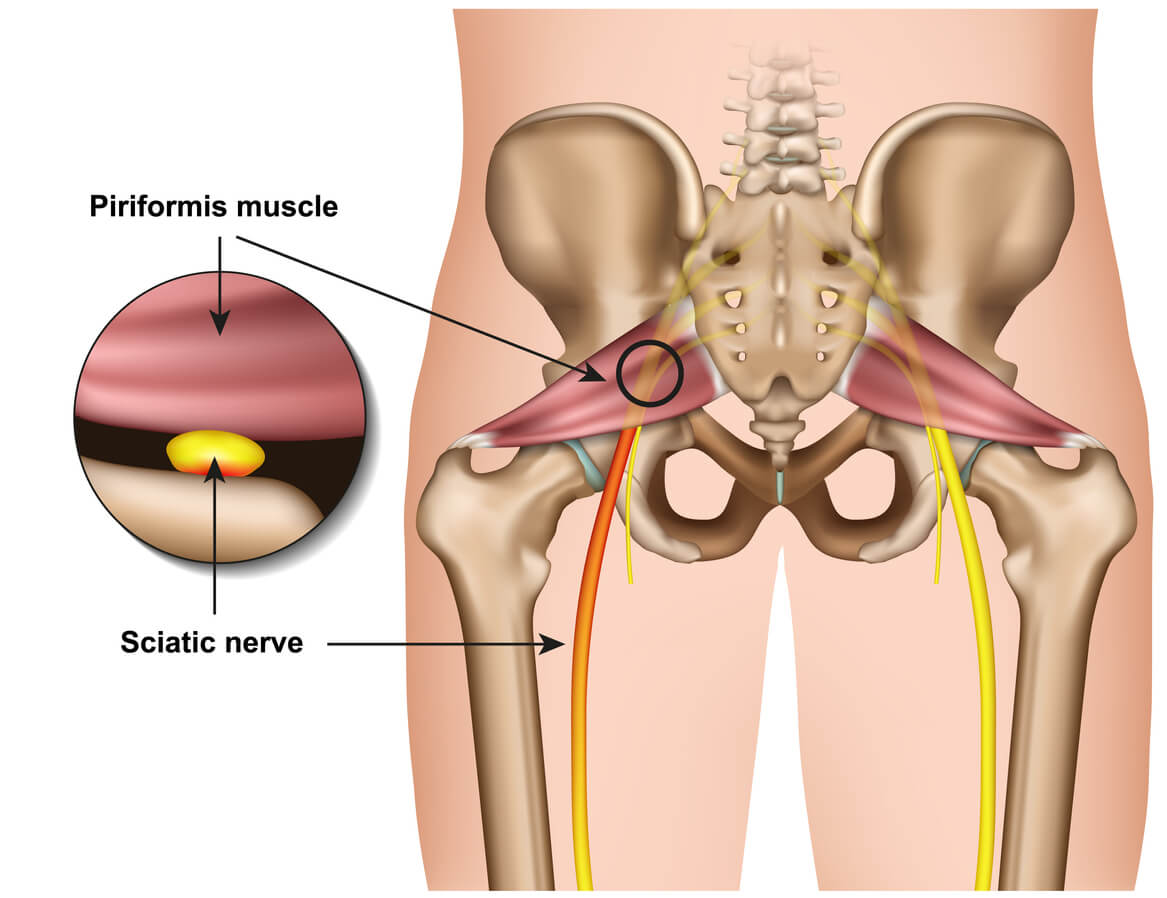Do you have an ache or numbness in your buttocks or hip that refuses to budge? What could be causing this discomfort? You may have pain caused by your piriformis muscle.
Meet the piriformis muscles
The piriformis muscle is flat, tapered, and located deep within your buttock. It stretches from your tailbone, connects with the sacroiliac joint (SIJ), and passes through a passageway from your pelvis to your buttock and leg. At the end, the muscle attaches to the outer part of your upper thigh bone.
Function of the piriformis muscles
The piriformis muscle is instrumental in rotating your thigh bone (femur) when your hip is extended. When your hip is flexed, it pulls the femur away from your body. Both hip extension and hip flexion are crucial for maintaining balance and performing various daily activities that involve leg movement.
Understanding pain in this muscle
The muscle can become strained or irritated from factors such as: long periods of sitting and inactivity, overuse, injury, and repetitive activities involving your legs, such as long distance walking, cycling or running. The piriformis muscle can irritate or compress the sciatic nerve and cause pain, tingling, or even numbness in your buttocks and the back of your leg. You might also have reduced flexibility in your lower back and hips, affecting your posture and gait. Compensatory movements might also stress the knees and ankles, leading to potential discomfort.
Treatment and prevention
The goal is to eliminate symptoms and improve function. It’s important to reduce activities that trigger your symptoms: take breaks, move often and stretch regularly. Inflammation or spasm may be helped by heat or cold therapy. From a chiropractic perspective, a sacroiliac joint problem is often seen with piriformis pain, usually on the same side. There are two SIJs, just as there are two piriformis muscles. As your pelvis and these muscles are connected, treating both makes clinical sense where appropriate.
As well as chiropractic care, treatment and prevention of piriformis pain may involve stretching and strengthening these muscles. Exercises will depend on what you can comfortably perform, a stretch shouldn’t be painful.
The following is a seated piriformis stretch. There are different versions, including those that ‘turn you into a pretzel’, but that’s not necessary!
• Sit on a chair with your feet flat on the ground.
• Place your right ankle over your left knee, allowing your right knee to drop gently to the side.
• Sit up tall with a straight back.
• Bend forward from your hips until you feel a comfortable stretch in your right buttock.
• Hold for 20-30 seconds, breathing deeply and relaxing into the stretch.
• Repeat on the other side.
Speak to us about suitable exercises for your body. The piriformis muscles have a big impact on our daily lives, by understanding their function and giving them a little extra care we can embrace a life of pain-free mobility!

